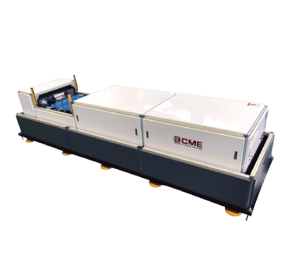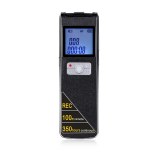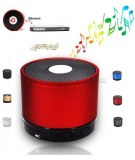The traditional shock test (also known as the classic shock test) mainly simulates the actual shock environment by the shock effect produced by a simple pulse. This method has great limitations, there is a trend to be replaced by shock response spectrum (SRS) standard srs test.
The shock response spectrum refers to a series of single-degree-of-freedom mass damping systems. When the public foundation is subjected to shock excitation, the response peak of each single-degree-of-freedom system is drawn as a function of the natural frequency of the single-degree-of-freedom system. Simply put, it is a curve drawn by taking the natural frequency of a single degree of freedom system as the abscissa and the response peak value as the ordinate under the Cartesian coordinate system.
An actual physical system can be decomposed into a number of different single-degree-of-freedom systems. For each SDOF system, the srs shock analysis and calculation are performed, and the maximum value of the system response is taken, and then a data point is formed with its natural frequency. In this way, how many sets of data points can be obtained as many SDOF systems can be decomposed into. Finally, these points are combined to get the shock response spectrum of the entire system.
CME provides series of SRS test equipment at good price. Contact us now!
REASONS AND ADVANTAGES OF SHOCK RESPONSE SPECTRUM INSTEAD OF CLASSIC SHOCK
01The shock response spectrum specification can avoid such errors
The purpose of studying shock is not to study the shock waveform itself, but to pay more attention to the effect of shock on the system, or to study the damage potential of the impact motion to the system. It is difficult and inaccurate to describe the damage potential with the time history of the shock and sometimes leads to wrong conclusions. But the shock response spectrum specification can avoid such errors.
02The classic shock specification strictly specifies the type of pulse
The classic shock specification strictly specifies the type of pulse, while the shock response spectrum specification does not make strict requirements on the type of shock pulse and the method of generating shock, so it has greater flexibility in experiments.
03Shock Environment
The shock response spectrum testing equipment is closer to the actual shock environment than the specified shock pulse waveform simulation.
04For the engineering designer
For the engineering designer, through the analysis of the shock response spectrum, the maximum dynamic load of each part of the equipment can be more accurately calculated, thereby predicting the potential damage of the shock; at the same time, it can also provide a more flexible test technique to ensure the repeatability of the test.
Applications of Shock Response Spectrum
1) Used as a measure of the impact effect. Because most systems and structures can be characterized by SDOF systems, even complex equipment or structures can also use dominant frequency (that is, the frequency corresponding to the maximum value on the spectral density curve) or analog frequency (that is, how many cycles per second, unit Hz), so the shock response spectrum can be used to easily determine the response peak of the structure under shock, and draw a conclusion whether it will be damaged;
2) For statistical analysis of shock events, a reliable specification spectrum representing the shock environment can be obtained;
3) Used for equivalent conversion of different shock waveforms, such as converting actual complex shocks into half-sine pulses with equivalent damage potential;
4) Used for test validity and repeatability check;
5) It is used to guide the design of shock-bearing systems.
For more information about testing equipment and mast table, please feel free to contact us!
Localisation : No.3 Upgrade Demonstration Base, West of Yongchang Rd., High-tech Zone, Xianyang City, Shaanxi Province, 712023 China, 712023 High-tech,
Personne à contacter : chnology cmete, 029 38128695







